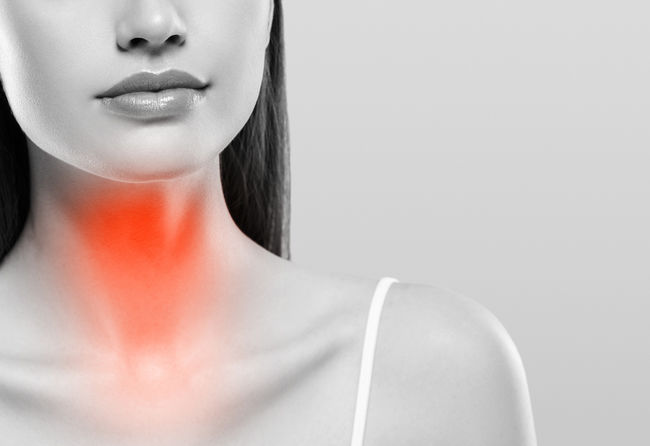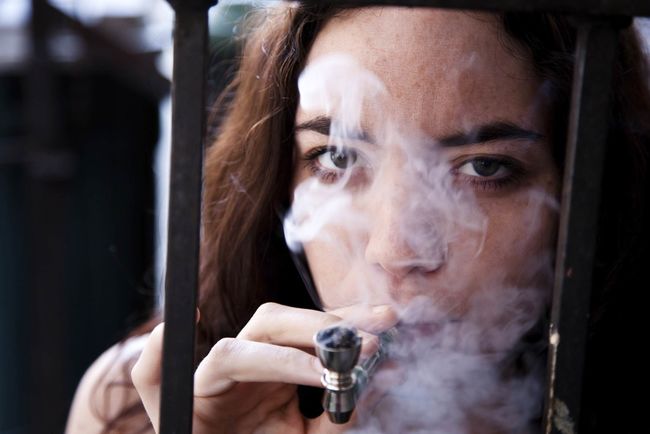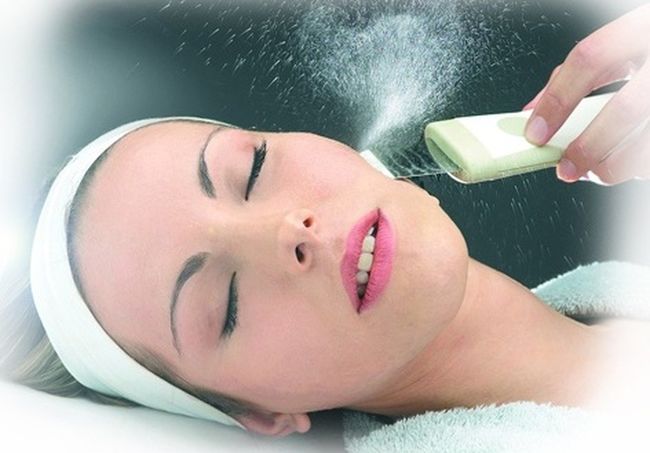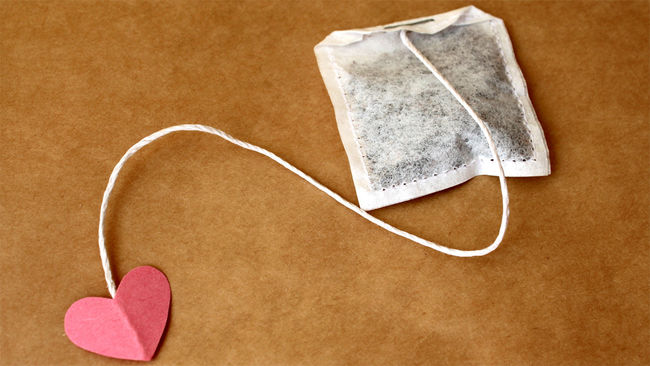Often a sign of a particular disorder in the body is unhealthy color faces. Sometimes, in combination with this symptom and others, a professional doctor can make an accurate diagnosis, even without tests.
Viruses and bacteria in the human body release various substances into the bloodstream, causing skin color to change. The shade is also affected by changes in the amount of some blood components. The skin may turn pale, yellow, red, blue and even green. Why does the complexion and sometimes the body change? What is this connected with?
Skin structure
The human protective cover contains two layers:
- Epidermis – upper layer consists of many cells. Some of them contain pigments (carotene, melanin, oxyhemoglobin, reducing hemoglobin). The color of the skin depends on the amount of certain substances.
- Dermis is the bottom layer. Consists of blood and lymphatic vessels. The presence of hemoglobin in the blood gives the skin pink tint.
More about pigments:
Carotene is a pigment that gives the skin a yellowish tint. Representatives of the Mongoloid race have more of it than other people. If this component is missing, it can be obtained from drugs and food.
Melanin is a brown pigment. There is a lot of it on the skin of representatives of the Negroid race. Sometimes it can appear as freckles in white-skinned people. It is also the culprit behind the appearance of age spots.
Hemoglobin - pigment Pink colour, responsible for oxygen in tissues. The coloring of the skin with this component depends on the number of vessels in it, their saturation with oxygen and not carbon dioxide (otherwise the skin will be red), and the thickness of the epidermis.
Other substances that affect skin coloring include:
Silver – gives the skin a bluish tint. It penetrates there after taking certain medications or when processing this metal.
Iodine – gives the face and body a yellow color when there is too much of it in the body.
Bilirubin is formed during the breakdown of red blood cells. Gives the skin a yellow color. Appears in the blood in some diseases.
Methemoglobin is a pigment formed when the structure of hemoglobin changes. The presence of this component is a sign of many disorders. When a person does not know why his lips turn blue, one should pay attention to the amount of this pigment.
Hit sun rays on hemoglobin, which is in the stage of transformation, is the cause of darkening of the skin.
Diseases that provoke changes in complexion of the face and body
Before you start making diagnoses by looking at the faces of individual people, you should remember that not everyone is a purebred Caucasian. Healthy color Europeans' faces have a white-pink tint, sometimes with a slight admixture of yellowness. Any changes original color skin problems are nothing more than health problems.
List of causes and diseases:
There are several reasons for a sallow complexion:
- Lack of fluid in the body;
- Alcohol abuse (about some people they say: “blackened”):
- Poor nutrition, namely: passion for fatty meat products;
- Intestinal dysbiosis;
- Diseases thyroid gland;
- Oncological diseases;
- AIDS;
- Blood poisoning.
Another reason for a sallow complexion is usually called lack of sleep, but this statement is easy to refute, since in some people the skin turns pale or does not change color at all. In addition, an sallow or, as people say, earthy complexion occurs in smoking people, as well as for those who do not like walking in the fresh air. It should be noted that an earthy complexion with the latter option is an easily remediable problem.
Blue color
First of all, bluish skin indicates insufficient blood circulation. A person's face can take on the following shade:
- By cold;
- For cardiovascular diseases;
- For diseases of the respiratory organs;
- After taking certain medications;
- In the presence of silver salts in the skin and internal organs;
- At large quantities nitrates in the body.
Sometimes blue lips and skin are signs of diseases and incidents such as:
- Iron-deficiency anemia;
- Gas poisoning;
- Lack of oxygen in the blood;
- Asthma attack;
- Quincke's edema (in the throat area);
- Lung injuries.
Hands
The color of the skin of the hands can also tell a lot: if the hands change color, this indicates changes in the body. Purple swollen hands sign:
- Frostbite;
- Venous insufficiency;
- Hand injuries:
- Long-term use of alcohol;
- Kidney failure.
Red spots on the hands may be a sign of:
- Allergies;
- Frostbite;
- Contact with chemicals.
Yellow skin color indicates human diseases such as:
- Hepatitis (A, B, C);
- Liver failure;
- Cirrhosis of the liver;
- Alagille syndrome (congenital liver pathology).
A yellow complexion can also appear if a person eats too many foods rich in carotene.
Yellow spots on the face
As a rule, they indicate:
- about gallbladder diseases;
- about the failure of lipid metabolism;
- about smoking;
- O elevated level cholesterol in the blood.
Quite rarely, the cause of spots is some facial care products.
Gray complexion and enlarged pores
Sometimes bad is a sign:
- intoxication of the body;
- alcohol poisoning;
- long-term drug use;
- smallpox suffered in childhood;
- improper care for oily skin.
White skin color was once considered fashionable, but this moment it is a sign of diseases such as:
- Anemia;
- Lack of certain vitamins;
- Exhaustion;
- Poisoning;
- Toxicosis during pregnancy (sometimes the face acquires a greenish tint);
- Ectopic pregnancy;
- Internal bleeding;
- Fat embolism (blockage of veins with subcutaneous fat).
One more problem: dull color faces. It happens in people with unkempt skin or vitamin deficiency. Here are a number of other reasons why skin becomes dull:
- Poor quality cosmetics;
- Alcohol;
- Smoking;
- Poor nutrition.
Skin can also become dull due to chronic lack of sleep (not for everyone), poisoning and lack of care.
If you observe your face, then any changes in its color should alert you, since they definitely have reasons that need to be eliminated. If your skin has become dull and acquired an earthy tint, you can try changing your diet, finally getting some sleep, and walking in the fresh air more often.
Olive, yellow, blue, white colors skin should be the reason for mandatory consultation with a doctor, especially if there are symptoms such as fever, vomiting, nausea, swelling, difficulty breathing. Otherwise: everything may end in death or disability.
Skin has many functions. It is a protector, a thermostat, an absorbent, and an indicator of the condition of our body. Rash, pimples, swelling, redness, changes in smell can be caused by poor diet, use of various medications, infection, allergies... But ultimately, the reason is always the same - a crisis in the body.
Based on where exactly skin problems appear, you can judge which internal organ needs help.
Complexion
Disruption of the functioning of almost any internal organ affects blood circulation in the human body and, as a result, the complexion.
A yellowish complexion indicates diseases of the spleen and stomach.
Green color appears when stagnation has formed in one of the organs. Often green tint skin indicates liver dysfunction. Paleness often accompanies loss of strength, anemia, and general malaise.
A reddish tint to the skin can be caused by overheating of the body or stagnation of blood circulation, fever, and sometimes - in combination with other symptoms - heart disease.
Pimples
If they occur on the back, this indicates problems in the lungs and kidneys, if in the area chest- about disorders in the lungs and heart, on the forehead - about lethargy of the intestines, on the cheeks - about diseased lungs, on the nose - about weakness of the heart, around the mouth - you should pay attention to the genitals.
Circles under the eyes
Puffiness and blue circles under the eyes indicate dysfunction of the reproductive system, and brown bags indicate a diseased liver. Those around the eyes dark circles, must pay attention to their nervous system.
Warts
Moles and warts are considered signs of an excess of certain substances in the human body. According to Chinese doctors, the formation of warts is promoted by an excess of protein and animal fats.
Wrinkles
A deep wrinkle between the eyes indicates disturbances in the functioning of the stomach and liver. In the old days they said about such people: “This person is a complete diseased liver.”
Saggy lips
The upper lip signals the state of the stomach, the lower lip indicates the condition of the large and small intestines. If your lips appear saggy, this indicates poor digestion.
Bright red lips indicate high blood pressure and respiratory problems. Dark purple lips are an indicator of excess cholesterol in the body, and pale lips are a sign that the body lacks oxygen.
Skin is an open book of our body. The main thing is to learn to read, and having mastered literacy, use it effectively. If you have skin problems, this does not mean that you are sick. Perhaps this is just a warning about a disease that will arise later. But it is necessary to heed this warning and seek advice from a doctor.
Why are the clouds gathering on our face? What guns will we use to disperse them?
You keep peering into the mirror - trying in vain to understand why your skin has become gray, sickly in appearance, has lost its natural pinkish-matte tint, has ceased to be elastic, smooth and fresh. Perhaps the reason is in the lifestyle, or maybe some diseases are to blame. Now let's try to figure out why the color of your face suddenly turned gray.
Crazy health
Let's start with health problems that can affect your complexion.
Digestive failure
Often a grayish face is the first “swallow” indicating problems in the gastrointestinal tract. Especially if it is pancreatitis and inflammation of the gallbladder (cholecystitis).
But perhaps everything is not so scary, because your complexion can become sallow when you overuse antibiotics, for example the same “antidiarrheal” chloramphenicol. Just give up harmful medications and the “graying” will quickly pass.
If your complexion has turned grey, you should first consult a dermatocosmetologist.
Enlarged epidermis
The epidermis is the top layer of skin, the “last barrier” to the outside world. If the body's metabolism is disturbed, it may begin to produce too much fat. It will stick together dead skin particles and prevent them from peeling off calmly. This is how the epidermis “grows fat”. Peeling helps eliminate the problem (at least temporarily). But keep in mind - too frequent peelings The skin color will be further damaged and its lipid balance will be disrupted.
Women with any skin type (oily, combination, dry) can turn gray in the face.
Hypothyroidism
The skin may become dull and grey colour if the thyroid gland does not produce hormones in the right quantity. Other typical signs such a problem is brittle nails and hair falling out.

To determine exactly why your face has turned gray, your doctor may order you to undergo an examination. internal organs and do biochemical analysis blood.
Are you addicted to cigarettes and still live in an ecological disaster zone in a metropolis? In this case, the gray color and facial sagging are easy to explain. Quit smoking and get out into nature more often. Then the amount of carbon monoxide in the blood will decrease, the blood vessels will dilate, the pores will clear, and the skin will breathe easier. Gradually, the gray color will go away, and along with it, wrinkles, sunken cheeks, increased dryness and other unattractive features will disappear. external signs smoker

If quitting smoking is an impossible task for you, then in cosmetics and food, rely on products rich in antioxidants that neutralize nicotine well. In this case, your face will not turn gray.
Or maybe there are other reasons:
You're eating wrong
You eat whatever you can and whenever you have to. You eat up before going to bed. Do you like to eat on the go? But have you forgotten that a person is what he eats? We are all literally made up of what we eat. You can't joke about this.
You torture yourself with starvation diets
A slim figure is, of course, good, but with gray her face will be of little use. Try not to depend on new-fangled diets and get everything you need from food, even if it adds a little fat to your thighs.
You're addicted to coffee
Excess caffeine ages the skin and makes it dull.
Do you like strong drinks?
For your skin color to acquire one of 50 shades of gray, regular drinking of “harmless” light beer is enough.

You're overwhelmed by stress
You live a life filled with stress, nervousness, and unnecessary experiences. Here, perhaps, you cannot do without a psychologist. It will help you reconsider your priorities, remove everything that puts too much pressure on your psyche, and at the same time makes your skin color look bad.
You sleep little
You don't get enough sleep, you go to bed too late. This disrupts the natural cycle of skin regeneration, and the face turns grey. It is not difficult to fix such a problem. Just take a bath before bed, walk in the fresh air and go to bed no later than 11.
You are "hypodinam"
You have fallen victim to the epidemic of the digital age - a sedentary lifestyle, or scientifically speaking, physical inactivity. This means that due to long periods of sitting, your spinal and cervical nerves are compressed and the blood supply to your head is disrupted. Massage helps solve this problem. You will also have to go on a diet that is low in social networks. Well, put your body to work - do exercises, jog in the morning, visit the “rocking chair”: then the color of your skin will become “sexy” again.

You're in love with a tan
You overuse artificial and natural tanning. Excess ultraviolet radiation makes the skin flabby, covers senile pigmentation, dehydrates and deprives of freshness.
You don't take care of your skin enough
Start using moisturizers regularly and use suitable toners. Don't forget to protect your skin from solar ultraviolet. At least once a week, clean it with scrubs to remove all dead particles and remove excess sebum. Be sure to apply whitening and nourishing masks.
It is advisable to turn to professionals. They might recommend:
- Chemical (superficial) peeling. Chemistry in this case means various acids (fruit, glycolic, enzyme).
- Ultrasonic peeling. Ultrasound removes dead cells absolutely painlessly.
- Facial massage. It will eliminate tension in the occipital and cervical areas, make the skin more elastic, and restore its normal tone.
- Ozone therapy. Thanks to this procedure, the skin is well saturated with oxygen.

Ultrasonic peeling can restore beauty to the skin
Always remove all makeup before going to bed. And in the morning, before applying makeup, be sure to use some kind of toner.
Old age and winter
Winter is unmerciful to the skin: cold wind dries them, and batteries in warm rooms do the same. Lack of sun rays and vitamin deficiency complete the matter.
Or maybe you're just getting old. Cell regeneration slows down, menopause sets in, the skin becomes drier, its color fades... But life goes on. The beauty and wellness treatments just mentioned will help you rejuvenate your skin.
Do not try to “mask” the grayness of your face with blush or foundation. This will be of little use, and in addition, the skin will begin to peel off, and yellowish pigmentation may appear.
Diet against gray color
The grayness will be driven away:
- Products with vitamin A. There is a lot of it in fatty sea fish, eggs, milk, carrots and citrus fruits.
- Foods that contain a lot of vitamin E. These are nuts, oats, vegetable oil, soybeans, corn and peas.
- Use ascorbic acid(vitamin C).
Also, be sure to drink at least 1.5 liters of water per day.
(6-8 glasses). It is best that it be mineral and not boiled tap water. It is advisable to drink green tea extract.
Remove sausages, mayonnaise, hot spices and fried foods from your diet. Don't drink sparkling water. Give preference to sweets natural products, such as honey and chocolate. But exclude lollipops and cream cakes from your diet.
Folk remedies
All the means are not the same as in this article, even in mediocre the digital library cannot be placed. Therefore, below are just a few of the most effective ones.
Carrot mask
- Grind a little carrot on a fine grater.
- Mix one tablespoon of it with egg yolk and a spoonful of just cooked mashed potatoes.
- Apply the resulting mixture to your face.
- Rinse off with lukewarm water after 20 minutes.
- And finally, you wash your face (with cool water).
Black tea
- Add a teaspoon of black tea to a glass of boiling water.
- In the resulting drink you put a few rowan berries (dried) and a couple of nettle leaves (also dried).
- You leave it to brew.
- After 20 minutes, strain.
- Wash your face with the resulting tincture every day for 2 weeks.

Beer mask
- Mix a quarter glass of heated beer with one egg yolk.
- Add one tablespoon of potato flour and the same amount of grated carrots to the mixture.
- Apply the resulting porridge-like mass to your face for 20 minutes.
- You wash it off (preferably with warm beer) and rinse your face with cool water.
Peach mask
- Mash the pulp of a ripe peach and mix with a teaspoon of oatmeal. If your skin is very dry, add a teaspoon of vegetable oil.
- Apply the resulting creamy mass to your face.
- After half an hour, wash off with lukewarm water.
These traditional methods will return your face natural beauty, freshness, shine and smile.
Natalia Vrublevskaya
The skin complements and duplicates the functions of human internal organs and is the first to respond to problems in the body. An experienced doctor is able to make a preliminary diagnosis based on the type skin. A change in skin color may be the first and only harbinger of a disease that has not yet manifested itself.
Skin tone is due to many reasons. Everyone knows about tanning, which depends on the content of melanin pigment in the skin. Many people remember the role of blood vessels: how close to the surface of the skin they are located determines whether the skin will be pink or pale. Skin color is affected not only by heat and cold, but also by:
Features of work nervous system(vascular reaction to emotions, nervous overload);
Age: yellowish-gray skin healthy person stains when the topmost layer of skin - the epidermis - thickens, this is due to the fact that over the years, skin cells are not renewed so quickly;
Poor nutrition, smoking, alcohol abuse, poor environmental conditions.
But if you didn’t just blush once, you turned pale, and if your skin, seemingly for no reason, changed its shade, and it remains long time- this is a reason to see a doctor.
If the skin has darkened and become swarthy
False tan and brown palms can be a sign of adrenal disease. It is called "bronze disease". If you have such symptoms, you should contact an endocrinologist.
The appearance of small brown spots on the skin of the face may indicate hormonal imbalance or dysfunction of the thyroid gland. Brown spots should be especially alarming if they periodically change their shape and color saturation.
A café-au-lait complexion appears when special bacteria enter the bloodstream and settle on the heart valves - this is the so-called protracted septic endocarditis. Brown spots hair roots indicate liver disease. Dark and even black skin color, especially on the cheekbones and root of the nose, is considered sure sign kidney disease or infection Bladder. In this case, you need to visit a urologist.
If the skin turns yellow
Yellow skin always indicates a diseased liver. It is this that prevents bile from breaking down and carrying out its metabolism normally. Bile pigment (bilirubin) enters the blood and colors the face. This is a direct indication for a visit to the doctor. Yellow skin color may indicate hepatitis, cholelithiasis, a disorder of the pancreas or spleen, as well as a blood disease.
Yellow spots on the eyelids and iris appear due to lipid metabolism disorders and elevated cholesterol levels.
"Waxy" face, bloodless yellowish color facial skin indicates possible development oncological disease.
An orange tint to the skin indicates hypothyroidism, that is, dysfunction of the thyroid gland. Orange skin occurs when the body lacks substances that break down beta-carotene. Carotene is fat-soluble, it accumulates in subcutaneous fat, and the skin changes color. This should be a reason to have your thyroid gland checked.
If your skin has a bluish tint
This skin color should be especially alarming: it is a signal of a lack of oxygen in the blood, and that the cardiovascular and respiratory systems can no longer cope with the task assigned to them. Diagnoses may be different: heart disease with circulatory failure, bronchial asthma, tuberculosis, pneumonia, chronic bronchitis, pleurisy, pneumothorax, pulmonary emphysema, thromboembolism. Dark circles under the eyes may be a sign of heart or esophageal disease. If the skin near the inner corners of the eye is blue or lilac color, then you need to examine your kidneys. Urgently see a doctor!
If your skin has a greenish tint
Greenish color is no less dangerous than bluish color. It indicates damage to the digestive or respiratory system by a tumor or the presence of a cyst. Complications of gallstone disease or cirrhosis of the liver are also possible. Do not be alarmed ahead of time and undergo the necessary examinations without delay.
Please note that when illuminated by fluorescent lamps (for example, in the subway or in the office), this skin tone appears to most people.
If your skin turns gray
An earthy gray color usually indicates problems with the gastrointestinal tract. It can be gastritis or banal constipation. A sallow complexion warns of impaired pancreatic function. Poor nutrition also worsens complexion. Take the time to consult a gastroenterologist to rule out serious illnesses.
If your digestion is fine, it means your skin has been damaged by stress and smoking.
Both the first and second lead to a narrowing of blood vessels and capillaries, significantly reducing the oxygen supply to the skin.
The skin turns pale gray after very serious illnesses. Doctors call this condition “cachexia.”
If the skin turns white
If, in addition to pale skin, there are symptoms such as low arterial pressure, fatigue, irritability, then it is quite possible to assume the presence iron deficiency anemia. Of course, an accurate diagnosis can only be made through a blood test.
In kidney diseases, especially chronic ones, pale skin is caused by vasoconstriction, primarily small capillaries, and swelling.
If a patient has glomerulonephritis, the skin will be swollen and pale, although there may not be anemia.
Paleness of the skin around the lips and under the nose warns of diseases of the cardiovascular system, heart failure.
Often mealy pallor occurs during an attack of angina pectoris.
Pale skin may also indicate this serious illness such as peptic ulcer of the stomach or duodenum. These ailments are often accompanied by internal bleeding.
Hormonal imbalances also affect the color and condition of the skin. Pale, clammy skin is characteristic of patients diabetes mellitus. In patients suffering from hypothyroidism (decreased thyroid function), the skin becomes dry, pale, swollen, and cold to the touch.
Pallor is a common symptom of various infectious diseases, in particular pulmonary tuberculosis.
A white tint to the skin can also appear due to poor blood supply to the skin for a variety of reasons:
Low blood pressure;
Lung diseases;
Lack of thyroid hormones;
Heart problems (inflammation of the heart muscle, aortic stenosis or left ventricular failure, risk of heart attack or stroke).
The skin may turn white due to the nervous system's reaction to cold, fear, and pain.
If the skin is red
A bright red complexion appears when the vessels of the skin fill with a large amount of blood. Most often, redness on the face appears when high temperature as a result infectious disease, as well as in case of poisoning with atropine, alcohol, hallucinogenic drugs and acetone. A rich cherry complexion occurs in those who have inhaled carbon monoxide. Facial redness may be associated with an abnormal increase in the number of red blood cells in the blood, increased blood pressure, or abnormal heart function. In this case, you need to check the cardiovascular system and do a blood test. If one cheek turns red and the other remains white, this is already a sign of unilateral pneumonia. Moreover, redness on the skin will appear exactly on the side of the face on which side the lung is affected. Loose skin that is reddish or lilac shade on the nose - signs of incipient lung disease or pathology of the large intestine. A constant strong blush on the cheeks, limited around the perimeter, indicates serious problems with the lungs, destruction of the alveoli, tuberculosis.
Purple face most often occurs in people over 50 years of age. This is how hypertension manifests itself. The blood vessels narrow, the blood becomes more concentrated and the skin turns red. In young people, this is a symptom of an adrenal tumor, when the pressure becomes incredibly high - 200/130, 200/120.
Identifying a disease at the very beginning means being cured in time, before the disease becomes chronic, because any disease is much easier to cure if it is not neglected. Therefore, the emerging warning signs- a reason to immediately consult a doctor and undergo medical examination to establish the correct diagnosis.
by Notes of the Wild MistressIt's not just tanning that affects our skin color. Skin tone depends on many reasons, for example, how close to the surface of the skin the blood vessels are, the characteristics of the nervous system, age, poor diet, etc.
But a change in skin color can also be a harbinger of the development of various diseases in the body. Therefore, if you notice that your skin has acquired some persistent shade that is unusual for you, be sure to contact your doctor and get examined.
If your skin has turned yellow

In this case, you should pay attention to the liver. Yellow tint skin appears due to the pigment bilirubin, which is formed in the liver when hemoglobin in red blood cells is destroyed. Then bilirubin is not excreted from the body, but settles in the tissues, so the skin becomes yellow or takes on an orange tint. The causes of jaundice can be cholelithiasis, hepatitis, bad job pancreas, spleen, and blood diseases.
If your skin has become dark
In this case, you should pay attention to the adrenal glands and kidneys. Dark color A face that looks like a tan can appear due to a lack of adrenal hormones. This disease is also called bronze disease. Treatment should be done by an endocrinologist.
And if the skin darkens very much and acquires an almost black tint, then this is a sign of kidney disease or bladder infection. You need to undergo an examination by a urologist.

If your skin turns white
The reason for this may be digestion or metabolic disorders, changes in the composition of the blood or problems with the thyroid gland, diseases of the cardiovascular system or lungs.
One of the most common causes of pallor is anemia, that is, a lack of hemoglobin. The skin also turns white when there is swelling or the reaction of the nervous system to cold, fear, or pain.
If your skin has a bluish tint
This is very dangerous and indicates a lack of oxygen in the blood, which may be a consequence of problems with the cardiovascular and respiratory systems. Diagnoses can be very different - pneumothorax, emphysema, heart disease or thromboembolism.
You should immediately contact a cardiologist and have your heart checked.
If your skin is red
In this case, it is worth taking a blood test, paying attention to the cardiovascular system, and taking the temperature. Redness of the skin may result from inhalation or ingestion of harmful or potent substances.

If your skin has turned gray
A sallow-gray skin tone usually occurs in people with digestive problems, such as gastritis, frequent constipation. Even just poor nutrition may leave marks on the skin. Grayish skin tone in smokers and people exposed to frequent stress. In this case, blood vessels and capillaries narrow, and the supply of oxygen to the skin is reduced.
If your skin has a greenish tint
This shade of skin can be caused by problems with gallbladder, liver or cancer. Moreover, as in the case of blue skin color, a green tint is dangerous and requires immediate medical attention.
A green tint appears in patients with liver cirrhosis, in cases of complications of gallstone disease and cancer.
Based on materials from print media
